It's a huge flower: about 6 feet (2m) high and 3 feet (1m) across. Mind you, that's not the whole plant --- that's just the flower. It can weigh 200 pounds/90kg. It's a beast.
The flower is best known for its odor: It smells lke something dead, all the better to attract carrior-eating insects, which pollinate the plant.
The blooming happens very quickly, after a long dormancy of up to 15 years. During blooming, the flower can grow at an almost visible rate. All that metabolic activity raises the plant's temperature to nearly human body heat. That helps volatize the odorous compounds, but is unsustainable for very long. The huge flower typically only lasts a couple of days.
The Franklin Park Zoo has a small collection of these Corpse Flower plants, which they've named Fester, Morticia, Pugsley and Vincent. (They also have one as-yet-unnamed seedling.)
Fester bloomed a few weeks ago; the event was so fast it went largely unnoticed.
But the Zoo has been on the case with Morticia, issuing daily progress reports to the media.
Morticia finally bloomed yesterday.
So I went over first thing this morning to take a look, and a sniff.
The Zoo built this temporary tropical greenhouse to house the happy family of corpse flowers:
(click thumbs for larger size)
I was there early, but the line was already long.
Signage lets you know what you were about to see.
I stepped inside the greenhouse, and there she was: Morticia, in her glory:
Oddly, the smell wasn't as bad as I'd imagined. It was there, and certainly noticeable, but not overpowering or revolting. It reminded me of fish that were past the point of eating, but not yet compost.
That actually makes sense, when you think about it. If you were a plant wanting to attract carrior insects, smelling like something recently dead, but still intact and with food value, is much better that smelling like something so far rotted that most of the food value was gone. Truly rotten food is only of interest to microbes.
"Recently dead, but not fully rotten" makes a lot more sense, for Corpse Flowers.
And although the smell was there, it was one you acclimated to pretty quickly. After a few minutes, it had become a background scent --- at least to this human nose. (I assume it was still screaming "FREE EATS!" to carrion insects.)
Morticia's lovely backside:
And a top-down view, via an overhead mirror.
Fester stood nearby, his bloom now brown and withered.
In between Fester and Morticia, the three young in-leaf plants stood --- two named, one as-yet nameless.
Some of the descriptive signage:
By the way: the Amorphophallus Titanum is sometimes referred to as the Titan Arum, a name made up by the BBC for television --- I'm not kidding --- so that no one would have to utter or hear the word "phallus."
Sigh.
Still, it was another fun outing, and perhaps the only time I've enjoyed the small of dead fish first thing in the morning.
Photobucket album: http://photobucket.com/corpse_flower



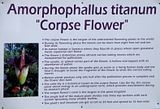
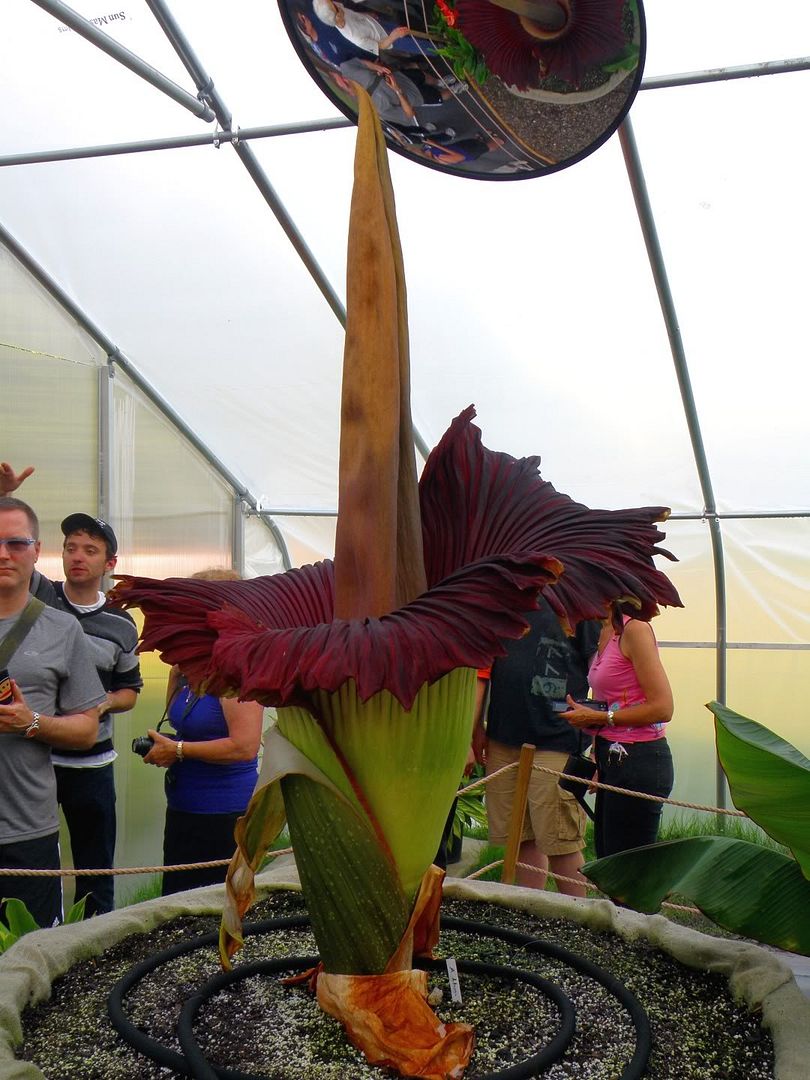
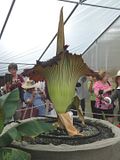
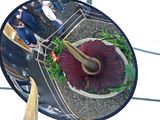
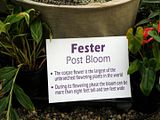
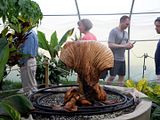


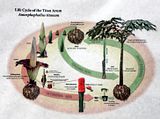
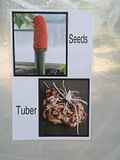
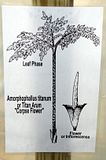
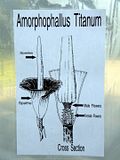
No comments:
Post a Comment